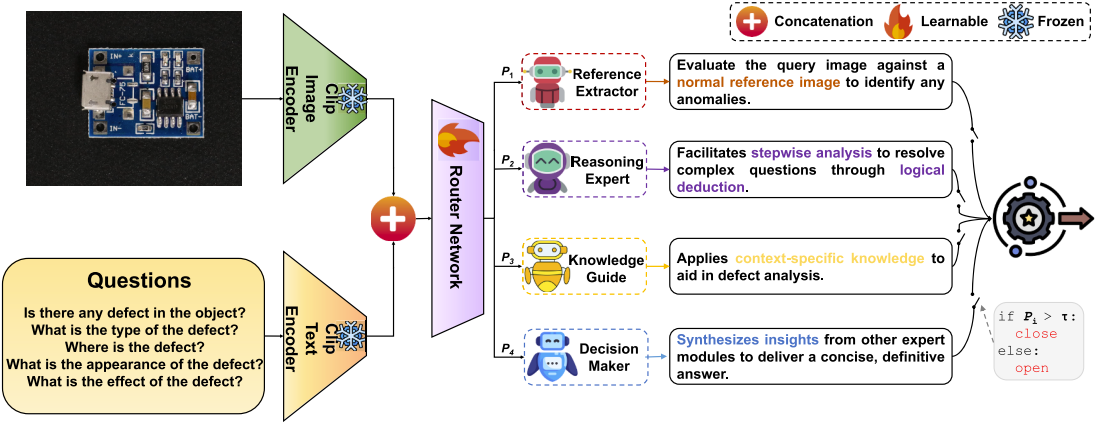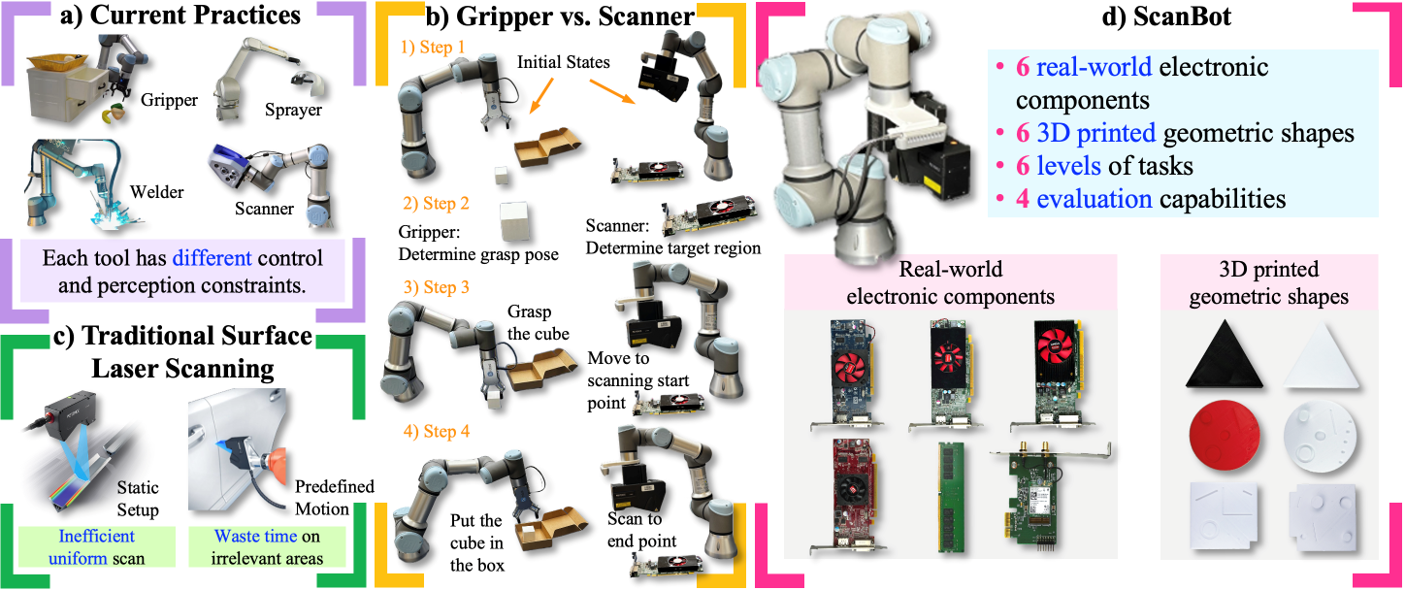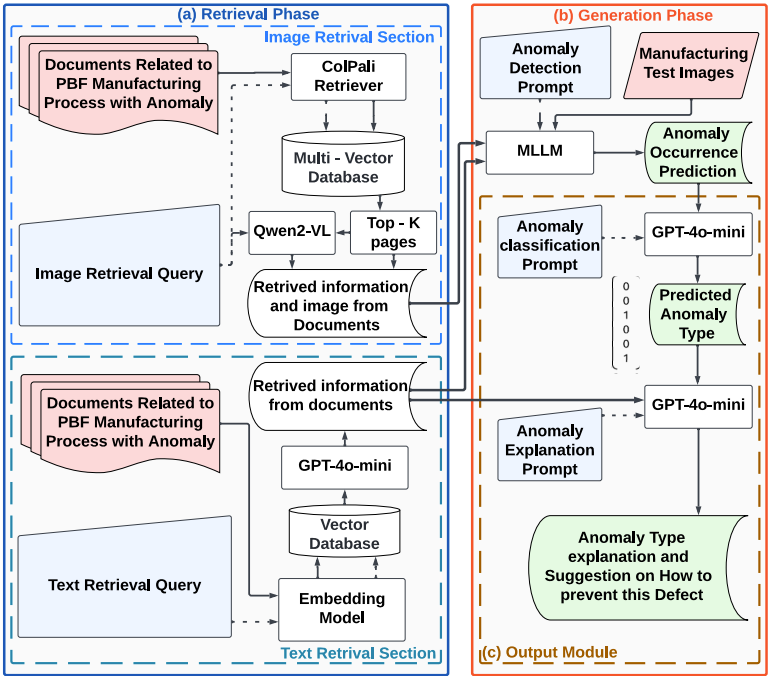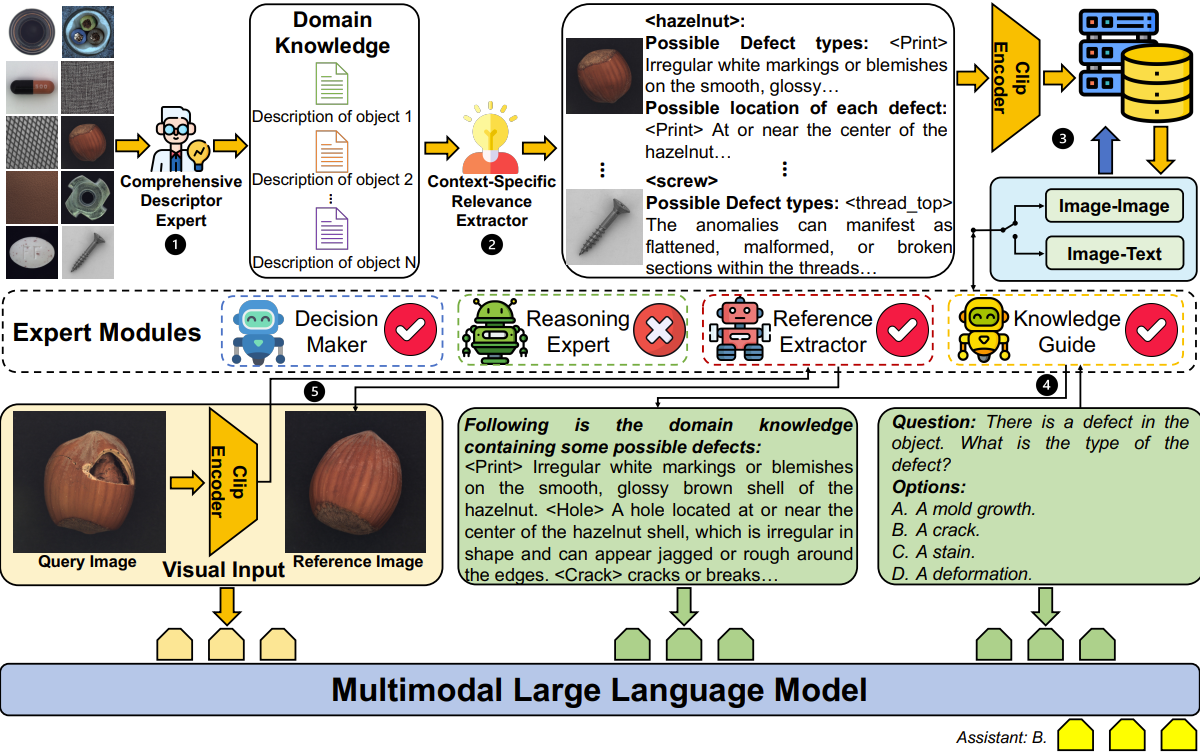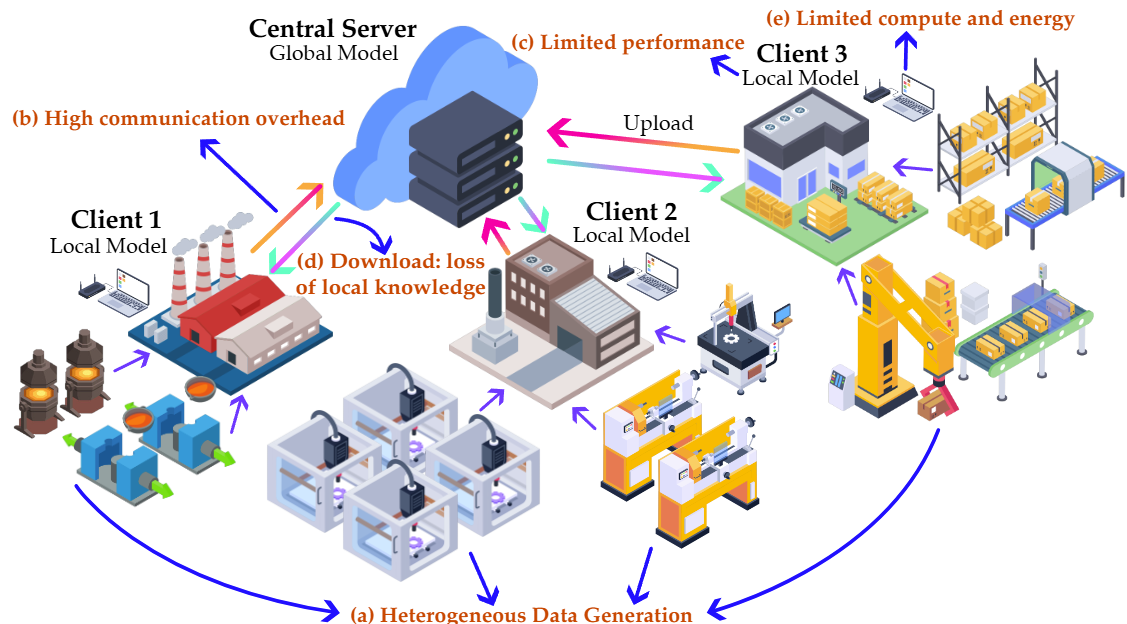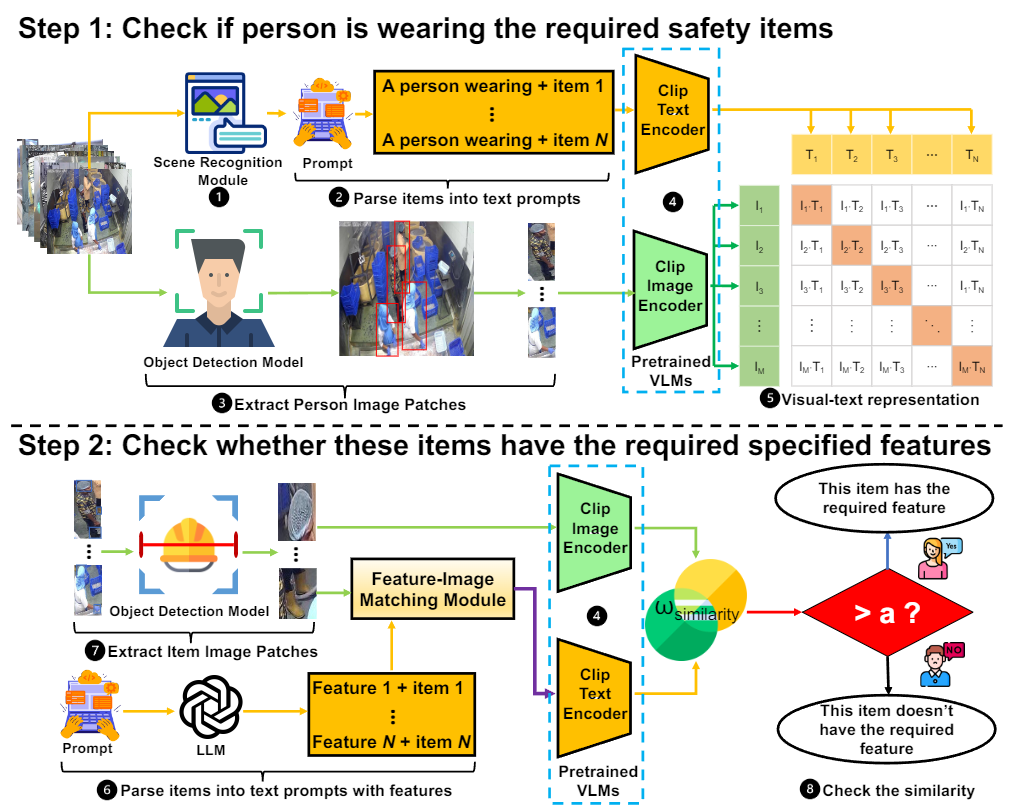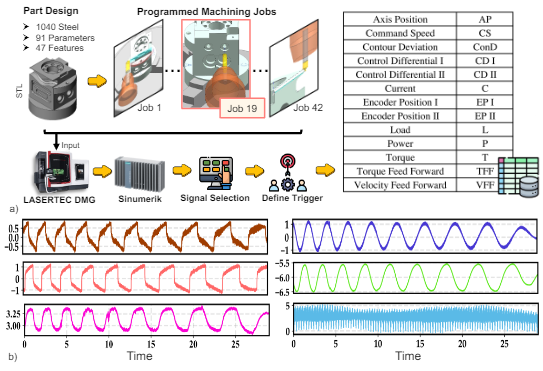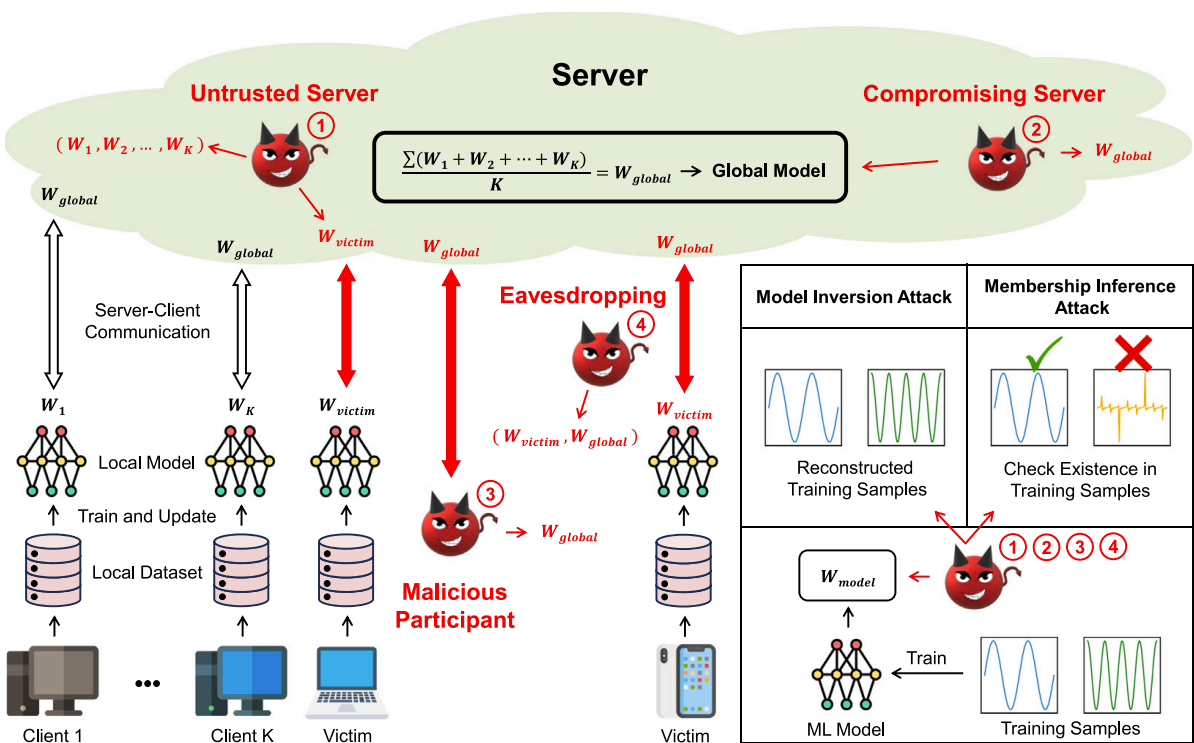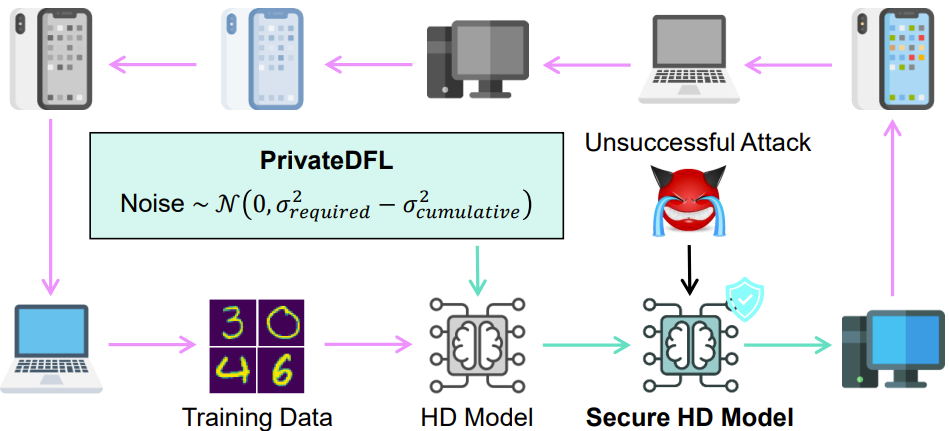Multimodal RAG-driven Anomaly Detection and Classification in Laser Powder Bed Fusion using Large Language Models
IDETC 2025
Kiarash Naghavi Khanghah, Zhiling Chen, Lela Romeo, Qian Yang, Rajiv Malhotra, Farhad Imani, Hongyi Xu.
Abstract:
Additive manufacturing enables the fabrication of complex designs while minimizing waste, but faces challenges related to defects and process anomalies. This study presents a novel multimodal Retrieval-Augmented Generation-based framework that automates anomaly detection across various Additive Manufacturing processes leveraging retrieved information from literature, including images and descriptive text, rather than training datasets. This framework integrates text and image retrieval from scientific literature and multimodal generation models to perform zero-shot anomaly identification, classification, and explanation generation in a Laser Powder Bed Fusion setting.
The proposed framework is evaluated on four L-PBF manufacturing datasets from Oak Ridge National Laboratory, featuring various printer makes, models, and materials. This evaluation demonstrates the framework’s adaptability and generalizability across diverse images without requiring additional training. Comparative analysis using Qwen2-VL-2B and GPT-4o-mini as MLLM within the proposed framework highlights that GPT-4o-mini outperforms Qwen2-VL2B and proportional random baseline in manufacturing anomalies classification. Additionally, the evaluation of the RAG system confirms that incorporating retrieval mechanisms improves average accuracy by 12% by reducing the risk of hallucination and providing additional information. The proposed framework can be continuously updated by integrating emerging research, allowing seamless adaptation to the evolving landscape of AM technologies. This scalable, automated, and zero-shot-capable framework streamlines AM anomaly analysis, enhancing efficiency and accuracy.
... See More







